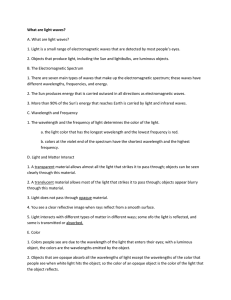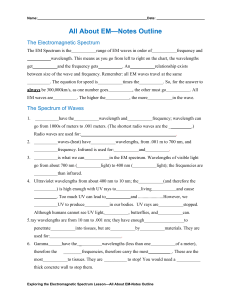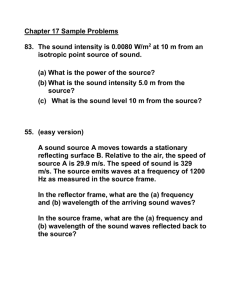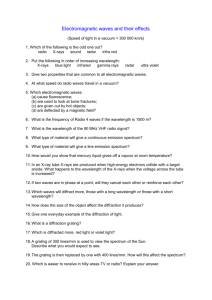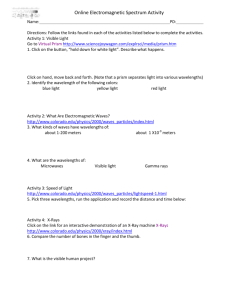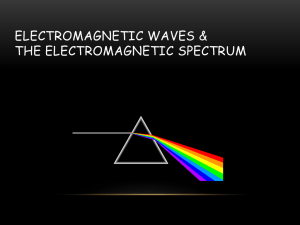Homework on e/m spectrum
advertisement
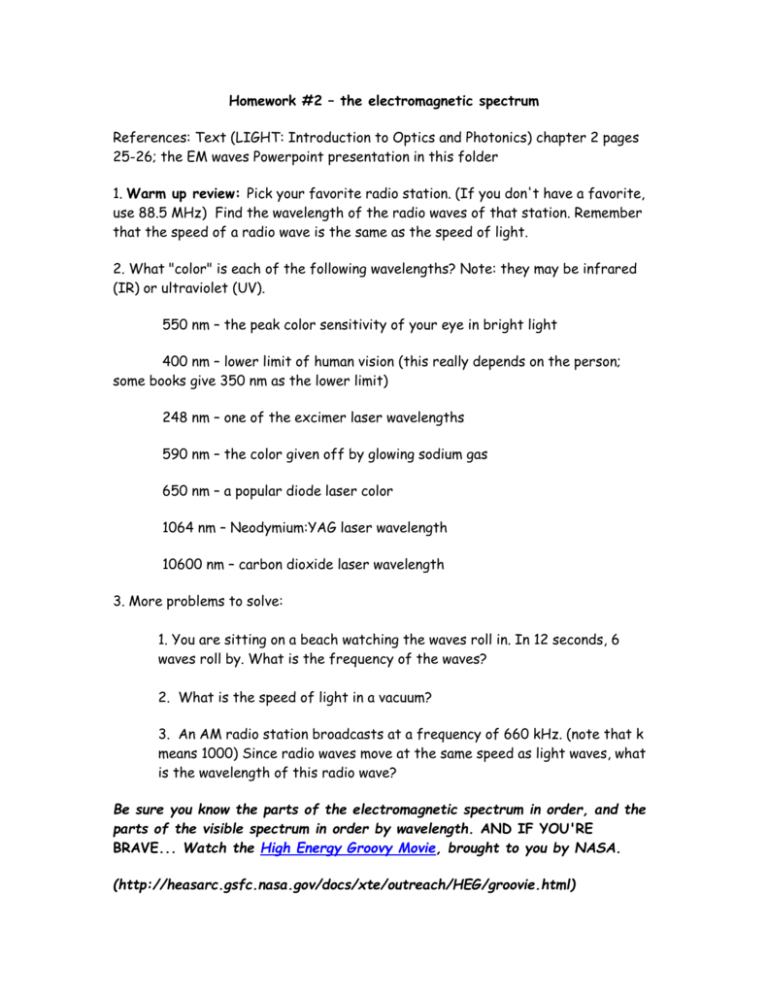
Homework #2 – the electromagnetic spectrum References: Text (LIGHT: Introduction to Optics and Photonics) chapter 2 pages 25-26; the EM waves Powerpoint presentation in this folder 1. Warm up review: Pick your favorite radio station. (If you don't have a favorite, use 88.5 MHz) Find the wavelength of the radio waves of that station. Remember that the speed of a radio wave is the same as the speed of light. 2. What "color" is each of the following wavelengths? Note: they may be infrared (IR) or ultraviolet (UV). 550 nm – the peak color sensitivity of your eye in bright light 400 nm – lower limit of human vision (this really depends on the person; some books give 350 nm as the lower limit) 248 nm – one of the excimer laser wavelengths 590 nm – the color given off by glowing sodium gas 650 nm – a popular diode laser color 1064 nm – Neodymium:YAG laser wavelength 10600 nm – carbon dioxide laser wavelength 3. More problems to solve: 1. You are sitting on a beach watching the waves roll in. In 12 seconds, 6 waves roll by. What is the frequency of the waves? 2. What is the speed of light in a vacuum? 3. An AM radio station broadcasts at a frequency of 660 kHz. (note that k means 1000) Since radio waves move at the same speed as light waves, what is the wavelength of this radio wave? Be sure you know the parts of the electromagnetic spectrum in order, and the parts of the visible spectrum in order by wavelength. AND IF YOU'RE BRAVE... Watch the High Energy Groovy Movie, brought to you by NASA. (http://heasarc.gsfc.nasa.gov/docs/xte/outreach/HEG/groovie.html)


